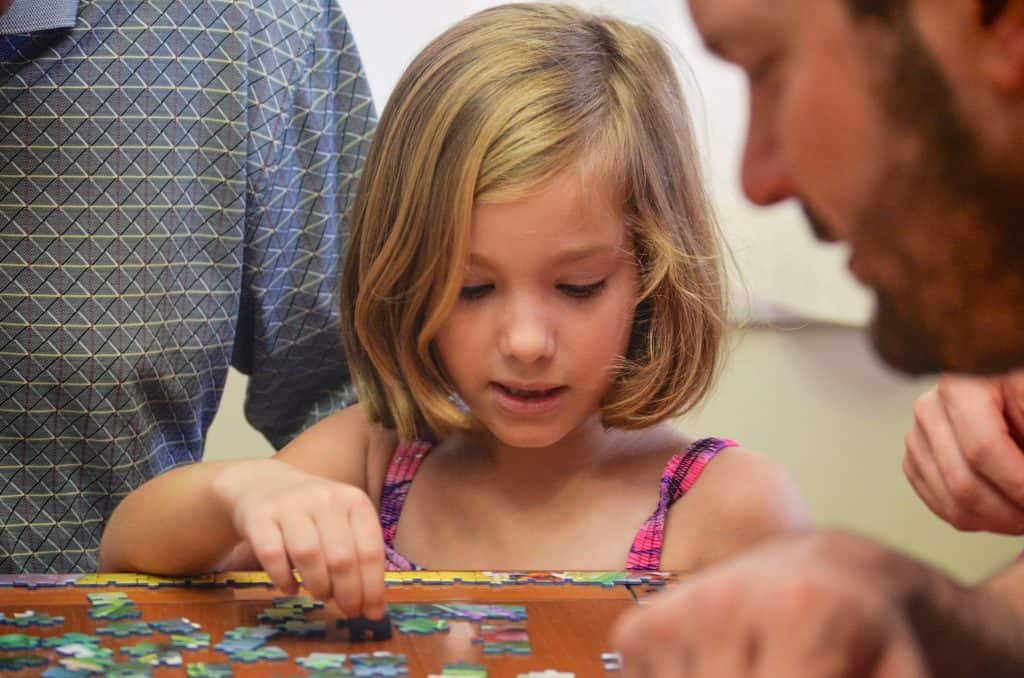The jigsaw puzzle is a fun way to build thinking skills through a process of trial and error. You have to examine the pieces, figure out where they go, and try to make it all fit together. It’s an exciting challenge that can be both educational and addictive! In this article, we will talk about how jigsaw puzzles are not just for kids anymore – adults can use them too! We’ll also discuss some different types of jigsaw puzzles available.
We all love to see that picture come together, and the jigsaw puzzle is a great way to do it. Using this tool can not only improve our thinking but also help us have fun while doing so! It’s hard work when you first start out because there are so many pieces missing from your photo – at least 20% of them! But it is a satisfying feeling when you finally find that one piece to complete the picture.
Jigsaw puzzles are a great way of building thinking skills and patience – it is not easy! Just like with anything, jigsaws require hard work and dedication. We can’t make something this complex without putting some time in, or we will never finish our puzzle.
This activity is a great way to encourage learners who are having difficulty. This is an excellent activity for children with Autism and Asperger Syndrome because it gives them the opportunity to work on their visual thinking skills while enjoying themselves in the process! Jigsaw puzzles may not be your go-to option when you want to engage children, but they are a great way to develop motor skills, problem-solving and more.
There is no one right answer when it comes to choosing what puzzles you will use in the classroom with learners. There are plenty of options out there that work well for children who have different learning styles – some prefer the picture puzzles with one answer, while others like to work through a jigsaw puzzle more than once.
Here are some types of Jigsaw Puzzles
Fuzzy Jigsaw Puzzles: The fuzzy jigsaw puzzle is the perfect puzzle for people who have trouble with their fine motor skills. These puzzles are made so that even a small misplaced piece won’t mess up the whole picture, which can be frustrating for some puzzlers. The best part about this type of puzzle? No one will know you messed it all up if your pieces go astray!
Educational Jigsaw Puzzles: These are puzzles that come with an educational theme and pieces like numbers, letters, or even animals. This type of puzzle can be used as a learning tool and give children something to do while they learn more about themselves.
Online Jigsaw Puzzles: These games can be accessed from any device with internet access. They are a great way to use educational jigsaw puzzles as well, which is perfect for when children are unable to get outside or want something more interactive than the traditional Jigsaw Puzzle in their hands!
Magnetic Jigsaw: It’s an innovative new way to enjoy putting together puzzles on your own, without having the pieces scatter everywhere and never knowing where they are again. It has been designed specifically for those who have difficulty grasping small objects or find it difficult to bend down in order to pick up puzzle pieces off of the ground after viewing them from above many times. This game is also great for those who are not looking to actually put together the puzzle and instead want something more visually stimulating. You can choose from many different designs, colors, or subjects that you would like it to be based on!
File Folder Jigsaw Puzzle: A file folder jigsaw puzzle is a type of children’s toy. It can come in any size or shape, and it usually depicts scenes from cartoons such as Frozen with Elsa on the front cover. Inside are cut-out pieces that need to be assembled into an image using their tabs at both ends for easy handling by little hands. This will help them learn how to use scissors while also learning about shapes like squares and triangles.
It is very important to teach the kids how to do household tasks and puzzles, because if they have these skills later on in life, then they will be able to live independently. A jigsaw puzzle is an excellent example of how we use our brain’s cognitive abilities like problem-solving, visual imagery, spatial reasoning, and working memory in order to solve these types of challenges. They’ll only get better at assembling a jigsaw puzzle if they do it often, so make sure to keep a few boxes of jigsaw puzzles at home for the kids.

